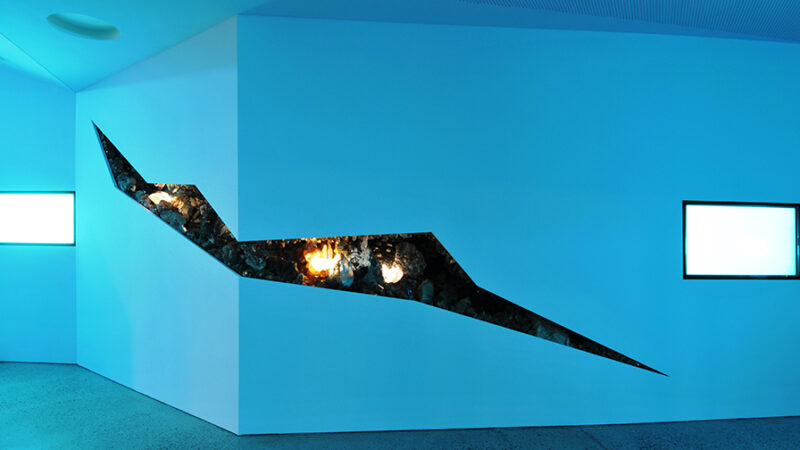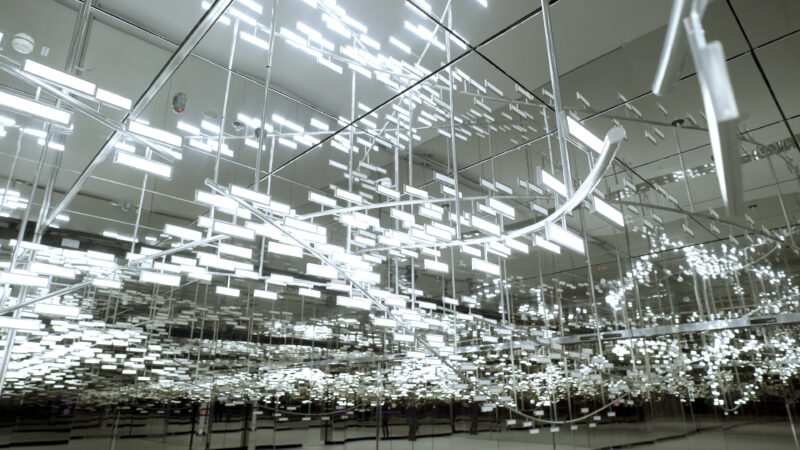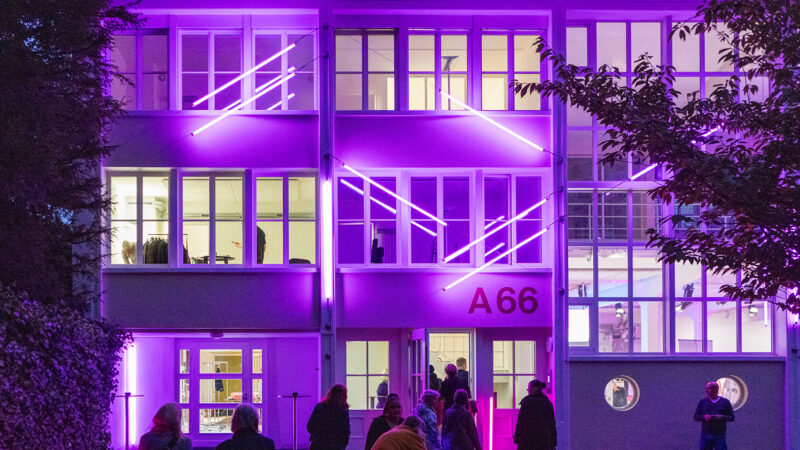From Stars to Drops of Water
The Hyundai Pavilion at the 2018 Olympics in Pyeongchang was Dedicated to Hydrogen
It may be the closest thing to space we have to visually experience on earth.designboom, 7 February 2018
Being There
In the Olympic Park at the Winter Games in Pyeongchang: Between sports stadiums and sponsors, a black hole stands out. Only when you get closer can the eye discern individual contours. Illuminated by thousands of flickering LEDs, the “darkest building in the world” develops an inherent pull that seems to violate all physical laws.
Lurking between the competition venues like an angular black hole, it looks like a portal to a parallel universe, waiting to suck ski fans into its vortex.The Guardian, 8 February 2018
Surface or Space?
The bewildering effect is created because the concave facade of the Hyundai Pavilion is finished with Vantablack VBx2, a coating that absorbs over 99 per cent of the incident light. Against this backdrop, thousands of LEDs were installed; their arrangement and individual intensity are modelled on the starry sky above Pyeongchang.
From Dark to Light
Moving inside the building, the contrast could not be greater. You find yourself in a brightly lit room, completely white, with a large water installation in the middle.

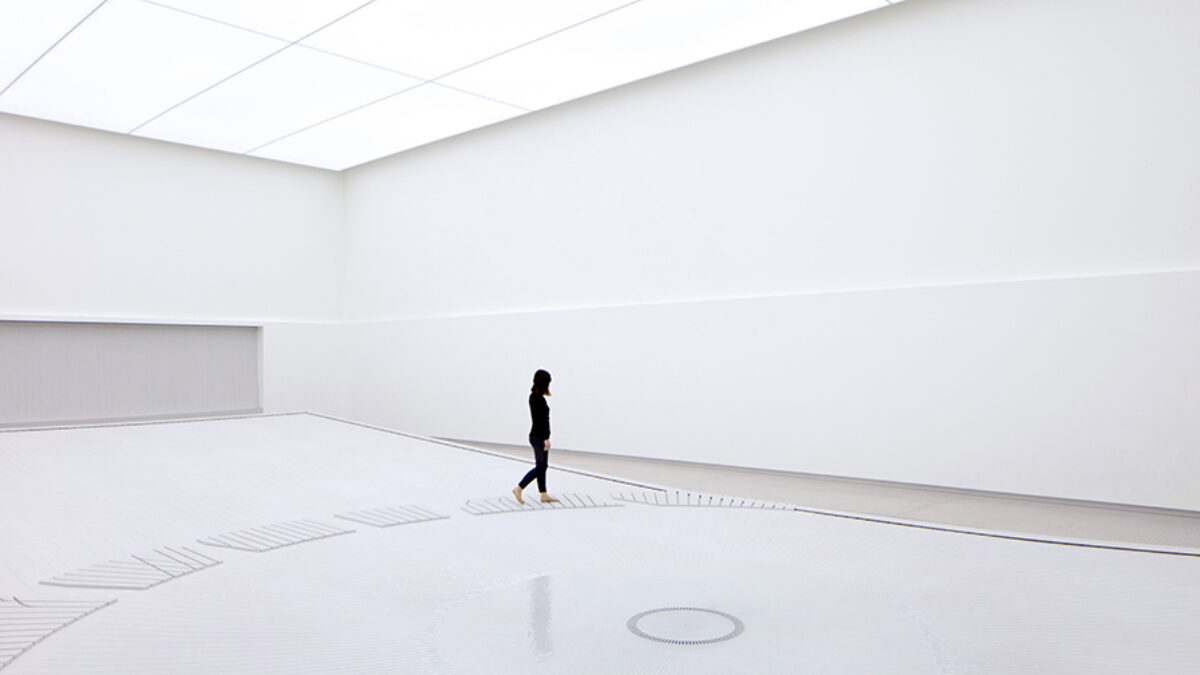
The Water Installation
Tiny droplets of water run through grooves cut into the surface and collect in the middle of the installation. Controlled by various sensors triggered by the visitors, the individual drops form a fascinatingly sparkling whole before disappearing after a few minutes through a drain and the fun starts all over again.
Technical Facts
- Room dimensions: 12 x 20 metres
- 258 water nozzles
- 25,000 water droplets per cycle
- 300 litres every two and a half minutes
- hydrophobic-coated Corian surface
- two ways to interact

Architecture as Marketing
By jumping from the infinite expanse of the star-studded sky to the scale of a single drop of water, the South Korean car manufacturer Hyundai wanted to draw attention to its hydrogen-fuelled vehicles without presenting a specific product. iart helped turn this ambitious desire into reality.

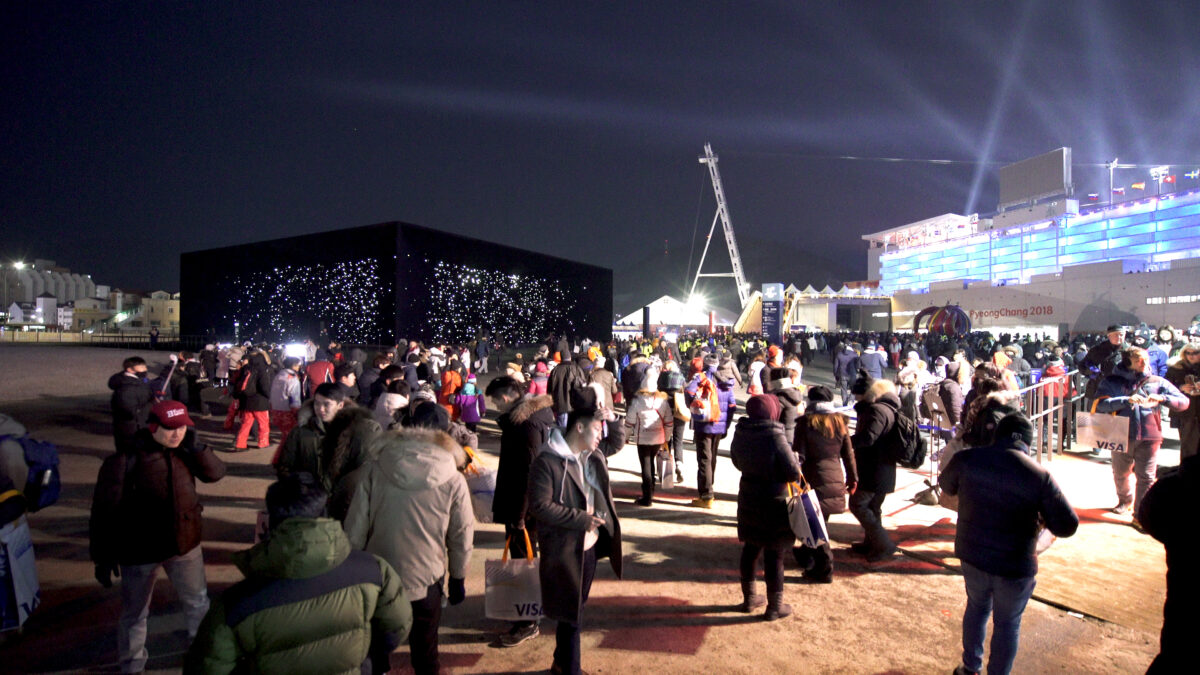
Putting Complex Ideas Into Practice
In order to be able to control each LED of the four façade segments individually, the iart team localised them with the aid of a high-resolution camera and developed software for their operation. In order to implement the water installation, experiments were carried out with the Institute for Thermo- and Fluid-Engineering at the FHNW. There, the behaviour of different sized water droplets on the hydrophobic surface was investigated and the processes of keeping the water clean were defined.
Opening
2018
Location
Pyeongchang
Clients
HyundaiInnocean Worldwide
Partners
Asif KhanInstitut für Thermo- und Fluid-Engineering FHNW
Services
Assembly and InstallationProject ManagementProject ControllingElectronic EngineeringInteraction DesignLight DesignService and SupportOperationPrototype ConstructionProcess Design and ManagementSoftware EngineeringSystem Design and DevelopmentTechnical Planning
Awards
XAVER-Award
GoldiF Design Award
WinnerCannes Lions
Bronze
Show All AwardsPhotos & Video Footage
Luke Hayes and iart
